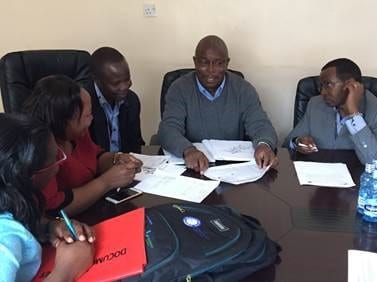Tracking Antibiotic Resistance in Kenya and Senegal
Posted On: August 2019
- Antibiotic resistance (AR or AMR) has been found in all regions of the world. CDC is working around the world, such as on surveillance projects in Kenya and Senegal, to combat AR.
- Because of local partnerships with CDC, the Kenya and Senegal ministries of health are strengthening their AR surveillance and are able to better track antibiotic resistance and respond to threats.
AR is Everywhere
Antibiotic resistance (AR or AMR) has been found in all regions of the world. Modern travel and movement of people, animals, and goods means AR can easily spread across borders and continents. Tracking data and surveillance of resistance are both an important part of the fight to combat AR. Knowing where and how changes in resistance are occurring can inform solutions—like containment and prevention, outbreak response, and drug and diagnostic development—to prevent spread and slow resistance.
Tracking and Data: CDC is strengthening surveillance in Kenya and Senegal
Given the pervasiveness of AR around the world, tracking and sharing data about resistant infections and emerging threats are critical to limit its spread.
Kenya
CDC and the Kenya Ministry of Health (MoH), through their National Public Health Laboratory Services (NPHLS), are working together to build capacity to establish a new, laboratory-based national AR surveillance network. The MoH and the National Microbiology Reference Laboratory (NMRL) have published a national AR surveillance strategy and the MoH is piloting surveillance at four sites: Thika, Kitale, Malindi, and Machakos. This is the first comprehensive, AR surveillance system led by Kenya’s government and will be used to better understand the prevalence and effects of eight antibiotic-resistant organisms in Kenya. This knowledge will be used to update appropriate treatment guidelines and promote additional research on AR.
Kenya’s NMRL will lead the AR surveillance for priority pathogens and eventually contribute Kenya’s data to global AR databases, like the World Health Organization’s Global Antimicrobial Resistance Surveillance System (GLASS). Having global antibiotic resistance data provides a standardized approach to the collection, analysis, and sharing of data on AR at a global level. By knowing where and how changes in resistance are occurring, CDC and others can inform solutions—like containment, prevention, and outbreak response—to prevent spread and slow resistance.
Kenya and CDC also partnered with the American Society for Microbiology (ASM) to adapt the Extension of Community Healthcare Outcomes (ECHO) tele-mentoring model for laboratory trainings. ECHO uses video-conferencing technology and case-based learning to train laboratory technicians and technologists from the AR surveillance sites on identification and testing of the priority pathogens. Through global collaboration, CDC and local partners can work together to stop spread the spread of resistant infections before it starts.
Senegal
CDC is also working with the Senegalese Department of Laboratories (DL) within the Ministry of Health to strengthen AR surveillance by developing an AR surveillance protocol and transitioning AR reporting to an upgraded system. This will improve data quality and allow labs to compare data against other participating labs and national trends to help check for potential outbreaks in the area.
CDC is working with partners in Senegal to revitalize the National Antibiotics Committee (NAC) and is supporting the NAC to update national guidelines on the appropriate use of antibiotics and train health care workers on the use of these guides.
Learn more
- See how CDC is taking action to combat AR globally with the AMR Challenge
- Watch this video to see how organizations are using tracking and data to combat AR
- Explore the AR Investment Map to see the domestic and global work that CDC funds
